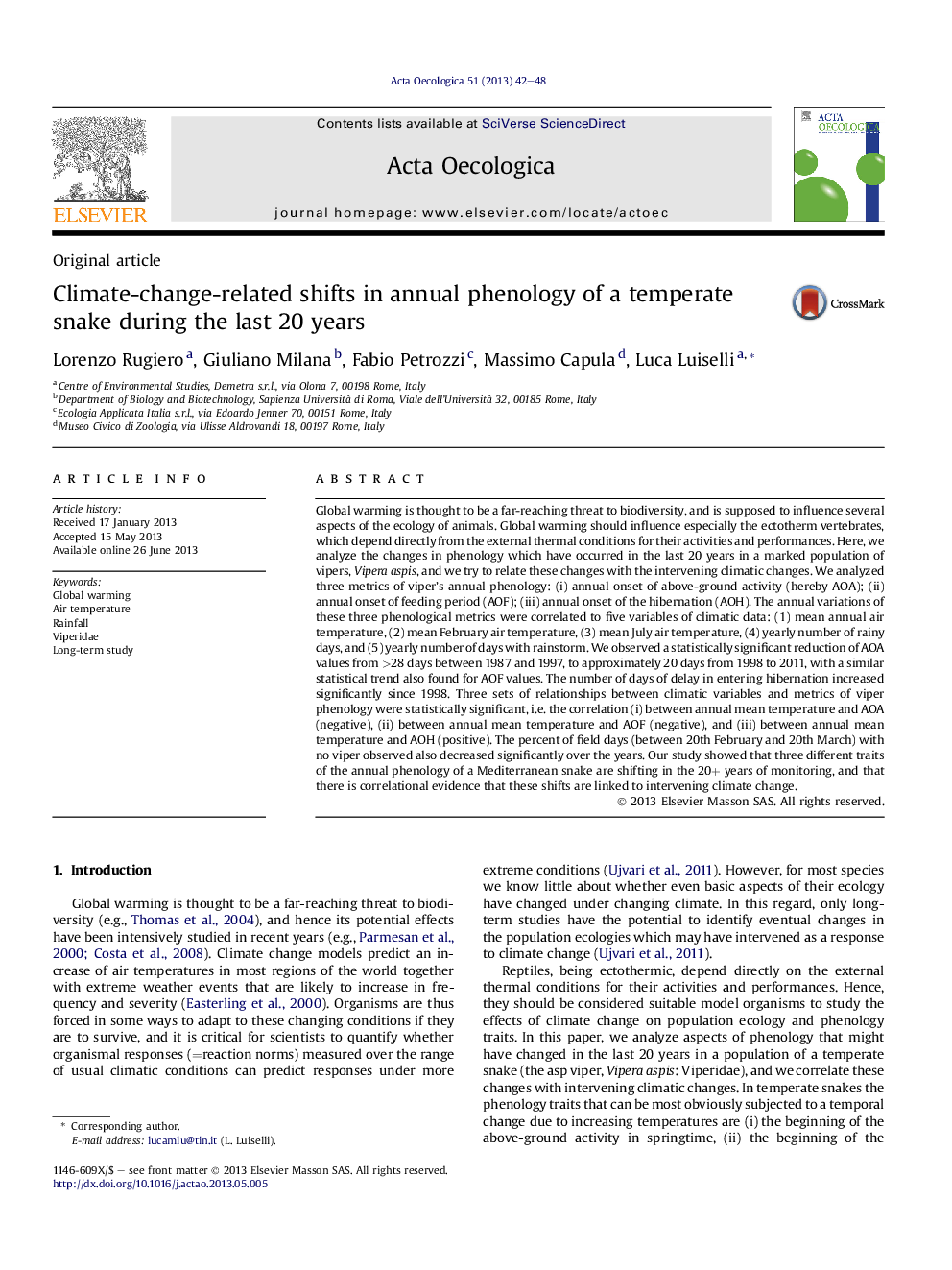| Article ID | Journal | Published Year | Pages | File Type |
|---|---|---|---|---|
| 4380783 | Acta Oecologica | 2013 | 7 Pages |
•Viper phenology shifted over 20+ years.•Shifts correlated with climate.•Climate does not threaten viper life histories.
Global warming is thought to be a far-reaching threat to biodiversity, and is supposed to influence several aspects of the ecology of animals. Global warming should influence especially the ectotherm vertebrates, which depend directly from the external thermal conditions for their activities and performances. Here, we analyze the changes in phenology which have occurred in the last 20 years in a marked population of vipers, Vipera aspis, and we try to relate these changes with the intervening climatic changes. We analyzed three metrics of viper's annual phenology: (i) annual onset of above-ground activity (hereby AOA); (ii) annual onset of feeding period (AOF); (iii) annual onset of the hibernation (AOH). The annual variations of these three phenological metrics were correlated to five variables of climatic data: (1) mean annual air temperature, (2) mean February air temperature, (3) mean July air temperature, (4) yearly number of rainy days, and (5) yearly number of days with rainstorm. We observed a statistically significant reduction of AOA values from >28 days between 1987 and 1997, to approximately 20 days from 1998 to 2011, with a similar statistical trend also found for AOF values. The number of days of delay in entering hibernation increased significantly since 1998. Three sets of relationships between climatic variables and metrics of viper phenology were statistically significant, i.e. the correlation (i) between annual mean temperature and AOA (negative), (ii) between annual mean temperature and AOF (negative), and (iii) between annual mean temperature and AOH (positive). The percent of field days (between 20th February and 20th March) with no viper observed also decreased significantly over the years. Our study showed that three different traits of the annual phenology of a Mediterranean snake are shifting in the 20+ years of monitoring, and that there is correlational evidence that these shifts are linked to intervening climate change.
